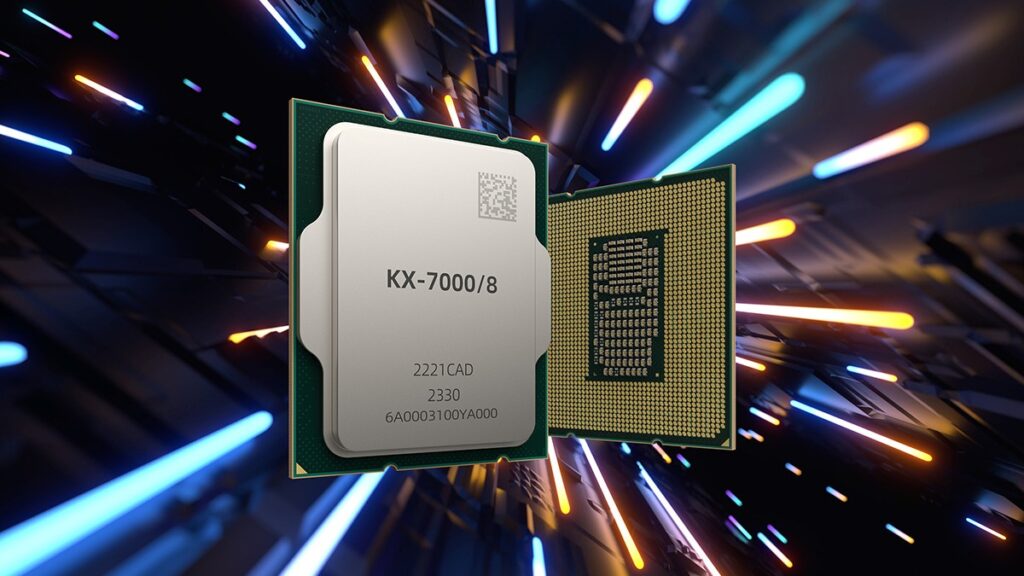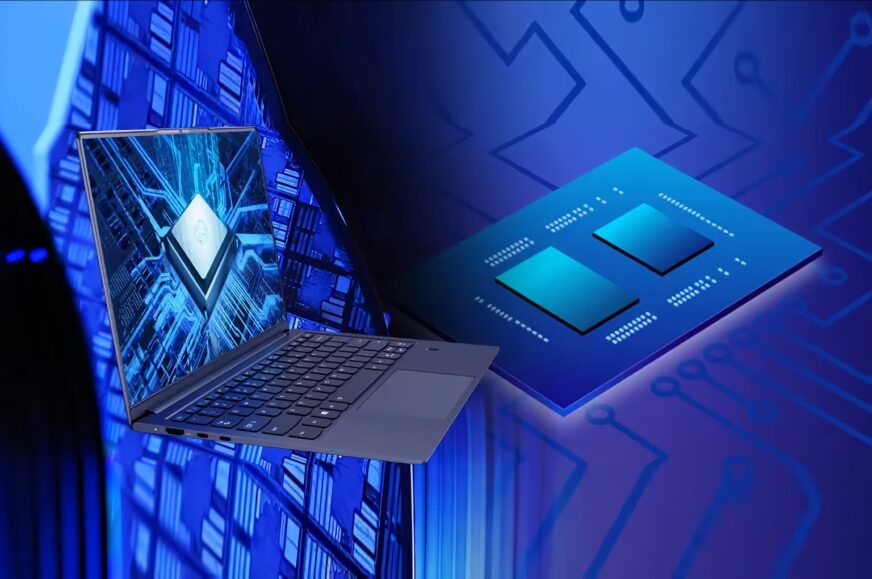The new generation of Chinese x86 processor looks to be the most powerful yet core in the VIA CPU line
While the US has blacklisted various Chinese CPU manufacturers, Zhaoxin keeps rolling with its x86 processors (albeit rooted in non-Chinese Centaur Technology and VIA). And now they have a new generation of x86 processors, dubbed the KX-7000, which could be its most interesting effort yet (perhaps like the recent Loongson 3A6000). It is a chiplet processor that also seems to have finally ended the tradition of insufficient clock speeds.
The Zhaoxin Kaixian KX-7000 processors have eight cores and supposedly use a chiplet structure allegedly similar to AMD’s processors, i.e. split into chiplets with CPU cores and chiplets with IO functions, but no photos or schematics have appeared yet, so take this with a grain of salt.
What is very interesting is that these processors have already reached a pretty decent clock speed of 3.7 GHz. More specifically, the company is supposed to offer a model with a base clock speed of 3.0 GHz and a boost of 3.6 GHz and a higher-end model with a base clock speed of 3.2 GHz and a boost of 3.7 GHz.
The performance per 1 MHz (IPC) is not currently unknown. However, it should still be a significant success. In the past, VIA and Zhaoxin processors were limited to clock speeds of only somewhere around 2 GHz (on the 28nm process), later on the 16nm process they reached the 2.7–3.0 GHz range. The Kaixian KX-7000’s 3.7 GHz clock speed would finally give hope of approaching reasonably close to performance levels of today’s state of the art.
The core architecture is reportedly labeled “Century Avenue”, but this is quite likely a machine translation from some Chinese name. The architecture is said to have various improvements to the frontend and out-of-order engine of the core and the execution units themselves (the number of ALUs is unknown, though, if you were about to ask the popular question). The cores should use 4MB of L2 cache (likely private) and 32MB L3 cache (presumably shared). Zhaoxin also mentions hardware acceleration of SM2 and SM3 cryptographic algorithms specific to the Chinese market.
When teased quite some time ago (2018), the Zhaoxin KX-7000 CPUs was said to deliver a big performance boost, but it’s hard to say exactly what kind of performance we’re talking about. In 2018, the company stated that this generation would be at the level of Zen 2, but such characteristics can be interpreted in different ways (for example, a lot depends on whether you mean single-threaded performance or just multi-threaded results, particularly when you are using more cores to achieve such parity).
Centaur Technology, whose technology previously underpinned CPUs from VIA and Zhaoxin, unveiled an advanced CNS core architecture in 2020, but has since ceased operations (parts of the company were bought up by Intel). It is a question whether Zhaoxin still builds the KX-7000 on Centaur IP, that sounds more and more unlikely at this point (one reason is that CNS achieved significantly lower clock speeds). Zhaoxin is likely already using its own development, even though it may be derived from earlier VIA/Centaur IP. If nothing else, the core in the KX-7000 processor does not support AVX-512 but only AVX2, so at least in this respect the architecture differs from Centaur’s last (and ultimately unreleased) microarchitecture.

Modern connectivity including USB4
The processor uses DDR5 memory, has a 128-bit controller with support for DDR5-4800 and also DDR4-3200 for compatibility, so it is similar to the mainstream Intel LGA 1700 platform. The integrated controller provides PCI Express 4.0 (24 lanes), USB 3.2 Gen 2 (10Gbps), and also USB4 (two interfaces). Three SATA ports are also integrated.
The Kaixian KX-7000 processor is supposed to have an integrated GPU supporting DirectX 12 / OpenGL 4.6 and OpenCL 4.1. The architecture might probably still be based on the S3 and VIA line of graphics architectures. This core supports decoding and encoding to H.264 and HEVC formats and up to 4K monitors connected via D-Sub, HDMI or DisplayPort.
Zhaoxin states that the company is producing these processors on an advanced manufacturing node, but won’t say where they are being produced or with exactly what technology – Tom’s Hardware mentions information that this is supposedly under an NDA that Zhaoxin is bound by. There’s probably more than one possibility here – either Zhaoxin is using TSMC or Samsung’s process but doesn’t want to draw attention to the fact for fear that the US would decide to sanction them to make production impossible; or the company is actually making chips domestically at SMIC, which is already under its own sanctions, and again, there’s probably a fear of secondary sanctions being extended to Zhaoxin for partnering with SMIC. Originally (years ago), KX-7000 was slated for production on TSMC’s 7nm process, but a lot may have changed since then.

The processor will be produced in BGA form (for laptops, embedded market), but now also in LGA form for modular desktop computers, i.e. in socket format with contact pads on the processor. These processors will thus be interchangeable and possibly upgradable, although there is no information yet saying if the next generation will fit into motherboards made for the KX-7000.
The socket, by the way, has dimensions of 37.5 × 45 mm, exactly like LGA 1700. Apparently, Zhaoxin wants to use existing components and mechanisms designed for Intel processor boards, thus saving a lot of money. At the same time, this could probably enable compatibility with all the existing coolers that support the LGA 1700 socket.
Several Chinese PC manufacturers among clients
Real store availability is expected in 2024, or at least that’s what the manufacturer anticipates. The Zhaoxin Kaixian KX-7000 processors will become available in computers from Lenovo, Tongfang, Unigroup, Ascend, Lianhe Donghai and other Chinese companies. However, we probably still won’t see them on the Western market, which was an unfortunate norm in the past with nothing indicating a change of course. Zhaoxin said some time ago that it would focus only on domestic market of mainland China. While this was in the context of discussions about exporting these CPUs to Russia as a replacement for Western hardware, it is possible that Zhaoxin intentionally does not want to enter the Western markets.
It remains to be seen to what extend Intel considers the transferred x86 instruction set and IP licenses that Zhaoxin relies on to still be valid. It’s possible that Intel would turn to patent litigation should Zhaoxin become too cheeky by trying to spread its activities outside of the Chinese borders. At the same time it has to be said that this has already happened in some cases. You could buy embedded boards and even a NAS with a Zhaoxin processors (QNAP TVS-675) in Europe in the past, so Zhaoxin’s self-limiting to Chinese market hasn’t really been enforced fully.
Sources: Tom’s Hardware, Zhaoxin
English translation and edit by Jozef Dudáš
⠀








